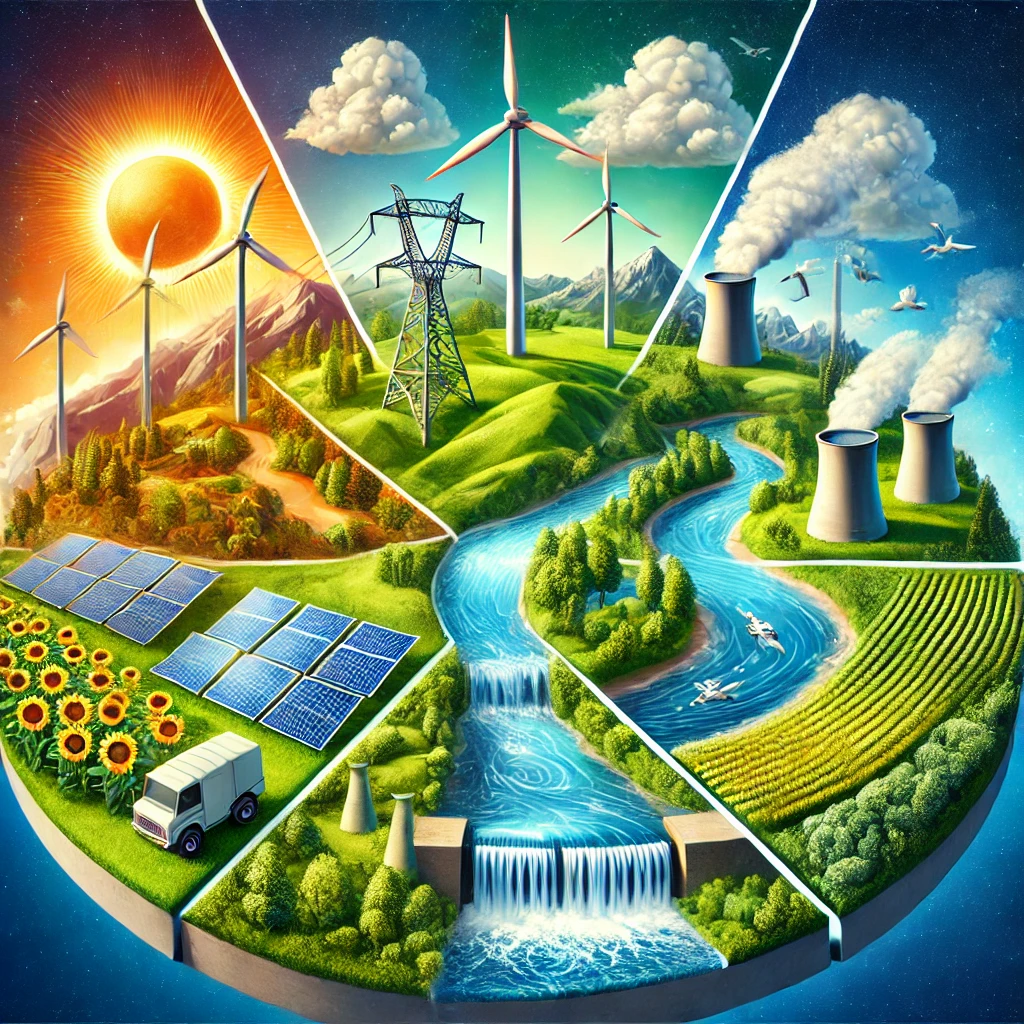What are 5 renewable sources of energy?
Article Source: Exploring Renewable Energy Sources

Why You Should Care
Renewable energy is the key to a sustainable future. As the world faces the challenges of climate change, finding alternative energy sources that don't harm the planet is more important than ever. Understanding the different types of renewable energy can help us move away from fossil fuels and reduce our carbon footprint.
Answering the Question… What are 5 Renewable Sources of Energy?
The study identifies five major renewable energy sources: solar, wind, hydropower, biomass, and geothermal. Solar and wind energy are the most rapidly growing, with solar power capacity increasing by 20% annually and wind power contributing over 6% of global electricity. Hydropower remains the largest renewable source, providing 16% of the world’s electricity. Biomass and geothermal are also significant, offering sustainable alternatives to traditional energy.
How Was the Study Done?
Researchers analyzed global energy data from various renewable sources, focusing on their growth rates, energy output, and environmental impacts. The study compared the efficiency and scalability of these energy sources, using data from international energy agencies and environmental studies to evaluate their potential to meet future energy demands.
What Was Discovered?
- Solar Energy: Solar power has seen an impressive 20% annual growth in capacity, making it the fastest-growing renewable energy source globally. It is now responsible for over 3% of global electricity production, with expectations that it will account for nearly 25% by 2050 as costs continue to decrease and efficiency improves.
- Wind Energy: Wind power currently contributes more than 6% of the world’s electricity, with offshore wind farms becoming increasingly significant due to their higher energy yields. In 2020 alone, global wind power capacity increased by 53 gigawatts (GW), reaching a total of 743 GW. By 2030, wind energy could power up to 35% of the global energy needs.
- Hydropower: Hydropower remains the largest renewable energy source, generating 16% of global electricity. It has a massive installed capacity of over 1,300 GW, and with projects like the Three Gorges Dam in China, it shows how critical this energy source is, especially in regions with abundant water resources. Hydropower also offers the benefit of storage and grid stability, making it a backbone for renewable energy integration.
- Biomass: Biomass energy, derived from organic materials like wood, agricultural residues, and waste, provides around 10% of the world’s energy needs, especially in developing countries. The study found that biomass could be even more significant, particularly with advancements in bioenergy technologies that could increase its efficiency and reduce its environmental impact. By 2050, biomass could contribute up to 18% of global energy demand if used sustainably.
- Geothermal: Geothermal energy, which taps into the Earth’s internal heat, offers a reliable and consistent energy supply. The study found that geothermal energy has the potential to provide up to 5% of the world’s electricity by 2050. Geothermal plants have a high capacity factor, often exceeding 90%, meaning they can produce power nearly all the time, unlike intermittent sources like solar and wind.
Why Does It Matter?
These renewable energy sources are essential for reducing greenhouse gas emissions and combating climate change. By investing in and expanding the use of renewables, we can decrease our reliance on fossil fuels, create new jobs, and build a more sustainable future. Understanding these energy sources helps us make informed decisions about energy use and conservation.
Link to full article: Exploring Renewable Energy Sources
